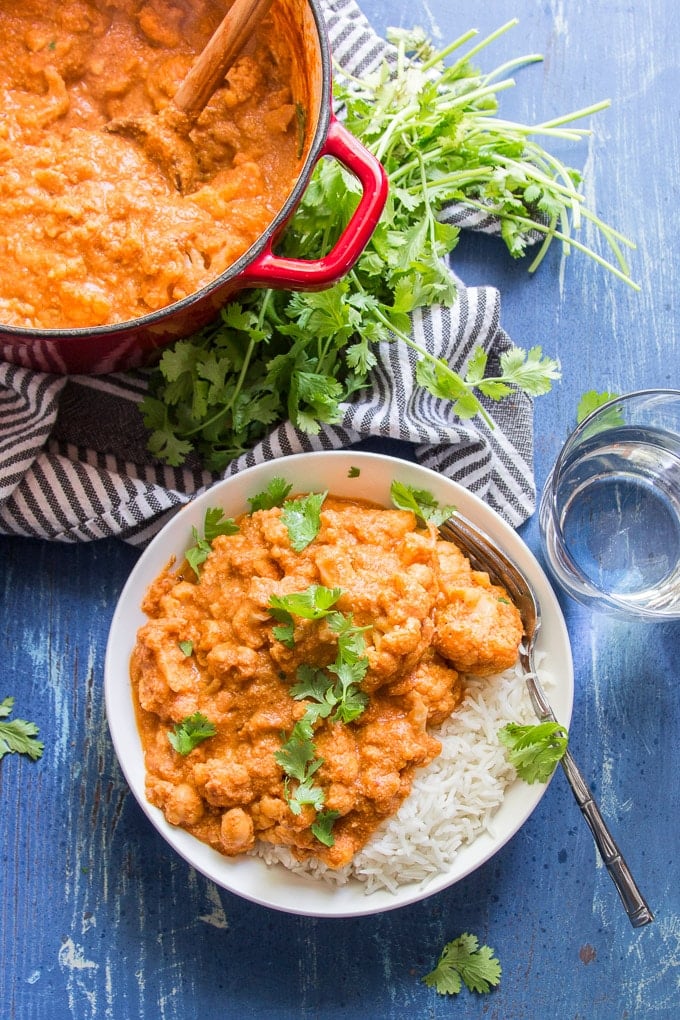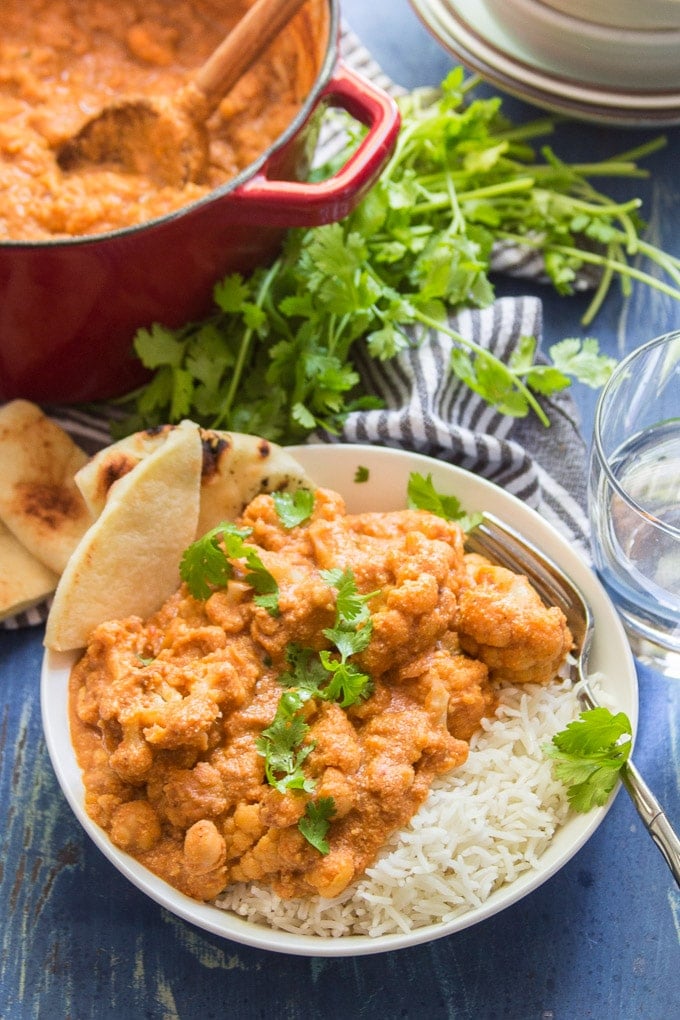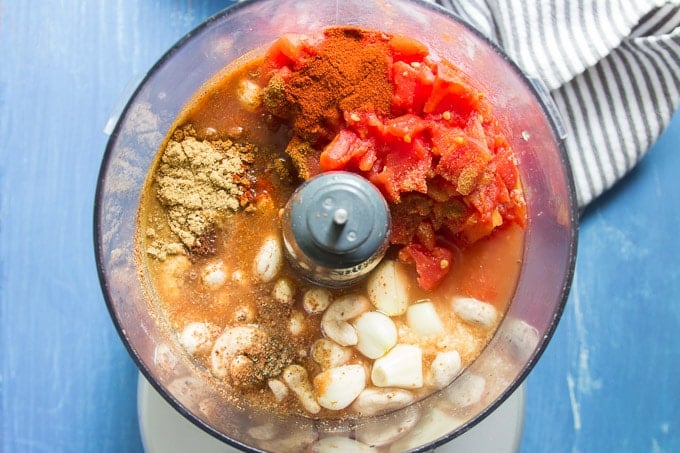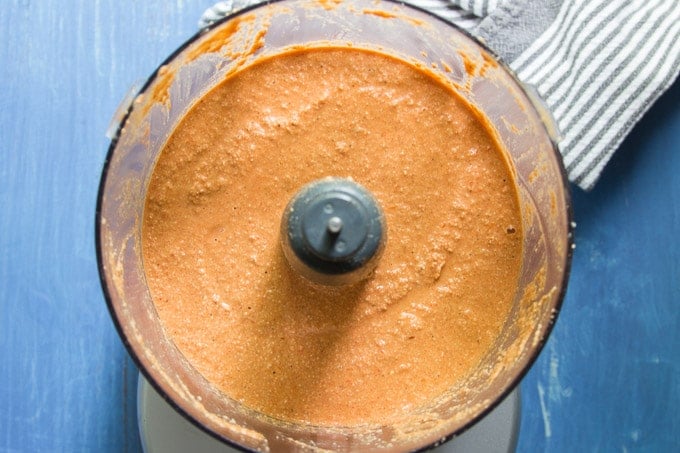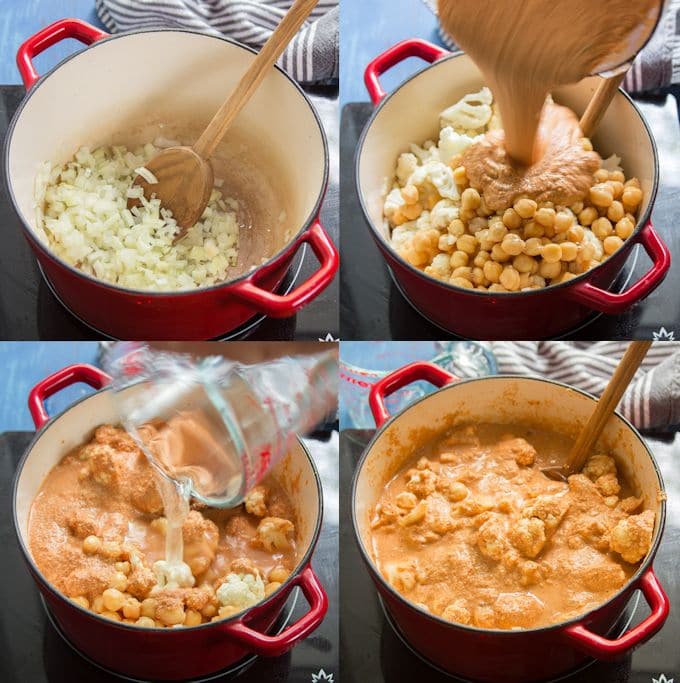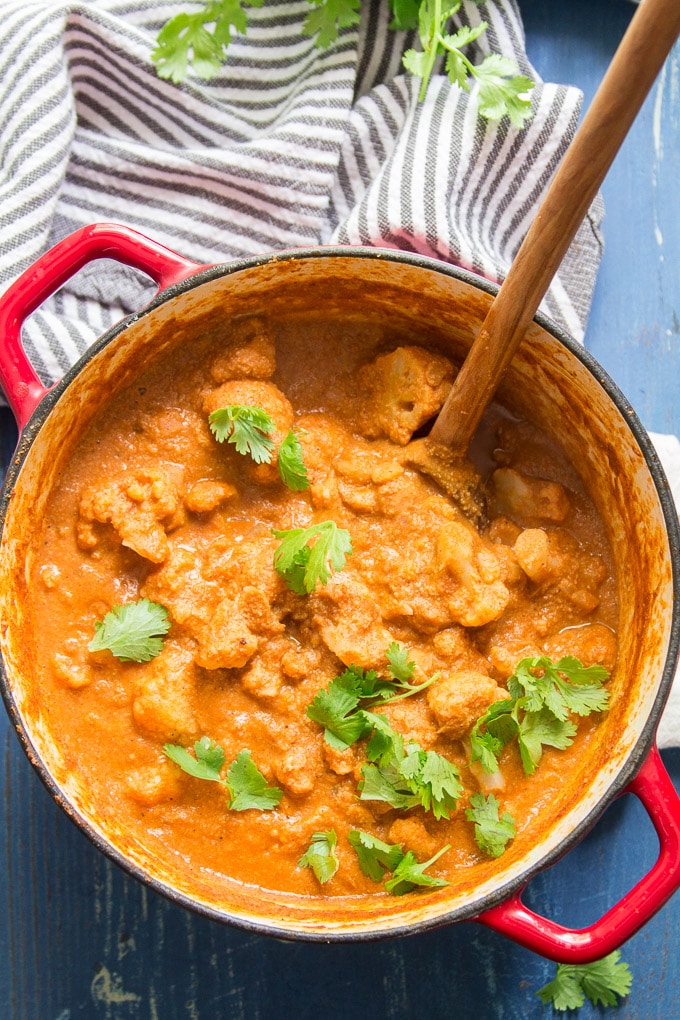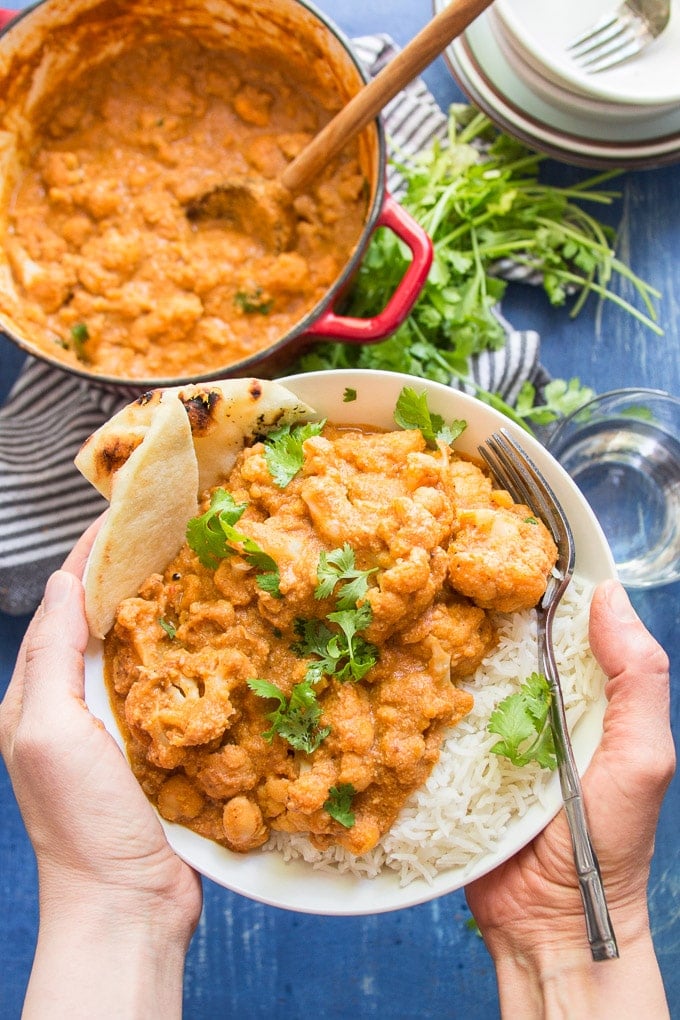It took me a long time to familiarize myself with the variety of dishes that make up Indian cuisine. I started out eating Indian food at a buffet, which is really the best way to get started on Indian food if you ask me. Head on over to the vegetarian section and grab a scoop of everything. Who needs labels? If it was meatless, I was happy to have it on my plate. After that I experimented with some sit-down Indian dining, on the first occasion of which, a friend instructed me to “Just pick anything at random off of the vegetarian menu. It’s all good.” I did. It was! It took a while before I ever learned about tikka masala, I suppose because usually shows up on restaurant menus as chicken tikka masala, which isn’t really that interesting to me. So even when I did learn of the dish’s existence, I never got to try it, with the whole chicken and later on dairy issues to contend with.
Really though, it would be such a shame to miss out on something like tikka masala. If you’re where I was not too long ago and know little of this dish, here’s the lowdown: rich, spicy, curry, tomato gravy. That’s it. It’s so good. I finally got down to it and created my own vegan tikka masala. No need for chicken. Cauliflower is the meatiest of veggies and chickpeas the meatiest legume. I threw ’em both in there.
Vegan Tikka Masala Sauce
Nor is there any need for dairy. Traditional tikka masala is made with yogurt and/or heavy cream. Sounds tough to replicate, but it’s really not. Cashews do the job! To make your tikka masala sauce, you’ll be soaking some cashews in water. Drain them, rinse them, then add them to a food processor bowl with some diced tomatoes, garlic, ginger, lemon juice, and lots of spices.
Blend everything until smooth.
Be patient! It can take a few minutes, especially if your blending device isn’t super powerful (mine’s not!). If you’re working with a very weak device, it can also help to blend your cashews to a paste before adding everything else.
Making the Curry
Once your sauce is ready, the dish comes together pretty easily. Sweat an onion in some oil for a few minutes. Once the onion has softened up a bit, add your cauliflower, chickpeas and sauce. Stir in some water and brown sugar to balance out the acidity. Let everything simmer for about 20 minutes, until the cauliflower is tender. Add more water when the sauce becomes too thick.
Take the pot off of the heat, give it a taste-test, season with salt, and adjust any other seasonings to your liking. Top off your tikka masala with a sprinkle of cilantro.
I serve mine with some basmati rice and vegan naan.
This recipe reheats and stores very well. If the sauce thickens up too much, just add a splash of water. Did you forget to soak your cashews? Try boiling them for 15 minutes. I keep a stash of frozen cashews on hand so forgetting is never an issue. Just freeze them right in their soaking water, then when you’re ready to use them, thaw, drain and rinse. Is this recipe gluten-free? Yes, it is! Is there a substitute for the cashews? Macadamia nuts may work as a direct substitute — they’re often a good replacement for cashews. You could also try making a vegan yogurt-based sauce using this recipe for guidance. How spicy is this recipe? It depends on how much sambal oelek (Asian chili paste) you use. The range suggested in the recipe should give you a mild to medium hot dish. If you’re concerned about the heat level, start with a small amount (or none) and add it to taste at the end. For some extra protein, try adding some pan-fried tofu to your tikka masala.
Like this recipe? If so, be sure to follow me on Facebook, Pinterest or Instagram, or subscribe to my newsletter. And please stop back and leave me a review and rating below if you make it!
